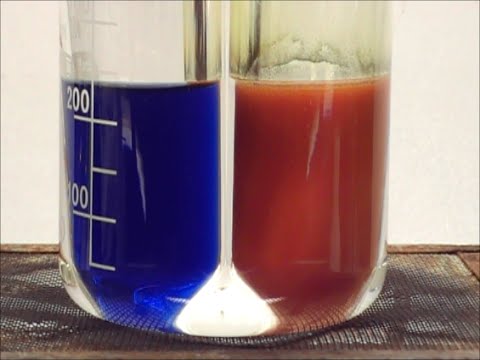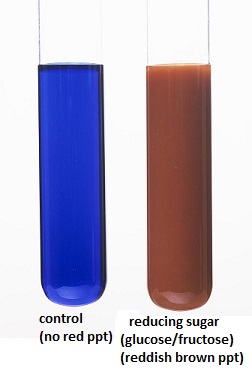
- The Fehling test was developed in 1848 by Herrmann Fehling.
- Like Benedict’s test, it is also a sensitive test for the detection of reducing sugars.
- Fehling’s reagents comprise of two solutions; Fehling’s solution A (which is an aqueous copper sulphate) and solution B (which is an alkaline sodium potassium tartarate or Rochelle salt). Fehling’s reagent (mixture of A and B) is blue in color.
- Fehling’s solution A and Fehling’s solution B or Rochelle salt (sodium potassium tartarate) present in the reagent act as the chelating agents in this reaction. These two solutions are mixed in equal amount before performing the test.
Principle of Fehling’s test:
- The aldehyde group of sugar is oxidised by complexed copper
ions to form acid. The red copper (I) oxide then precipitates,
which is an indicator for the redox reaction. - Formation of red precipitate of cuprous oxide is an evidence of the presence of reducing sugar.
Reagents and materials required:
- Test solution: any test sample like glucose or urine, or any prepared standard solution
- Fehling’s reagent (solution A): CuSO4.5H2O
- Fehling’s reagent (solution B): Sodium potassium tartrate
- Water bath
- Pipettes
- Dry test tubes
Procedure of Fehling’s test:
- 1ml of sample was taken in a dry test tube.
- 1ml of distilled water was taken in another tube as control.
- 1ml of Fehling’s reagent (A and B) was added to all the tubes.
- The tubes were then kept in boiling water bath.
- The tubes were observed for the development of red precipitate.
Result interpretation:

- Positive Fehling’s test: reddish brown precipitate ( glucose, fructose, lactose)
- Negative Fehling’s test: No red precipitate (sucrose, starch),i.e. no reducing sugar